Physical Address
304 North Cardinal St.
Dorchester Center, MA 02124
When hepatobiliary surgeons consider what treatment is best for a patient with a tumor in the liver, several questions must be answered. What kind of tumor is it, which resection margin is necessary, is the liver sick or healthy, is the liver remnant sufficient, is there more than one tumor, did the patient undergo surgery before? When these questions and others have been answered, the surgeons can decide what operation is suitable (see Chapters 4 , 87 , 101 , and 102 ). And the answer to that final question might be different from continent to continent, country to country, or even surgeon to surgeon. Some have a strong tradition for hemihepatectomy, some prefer ablation, some do anatomic resections, and some prefer non-anatomic resections ( Fig. 127D.1 ).
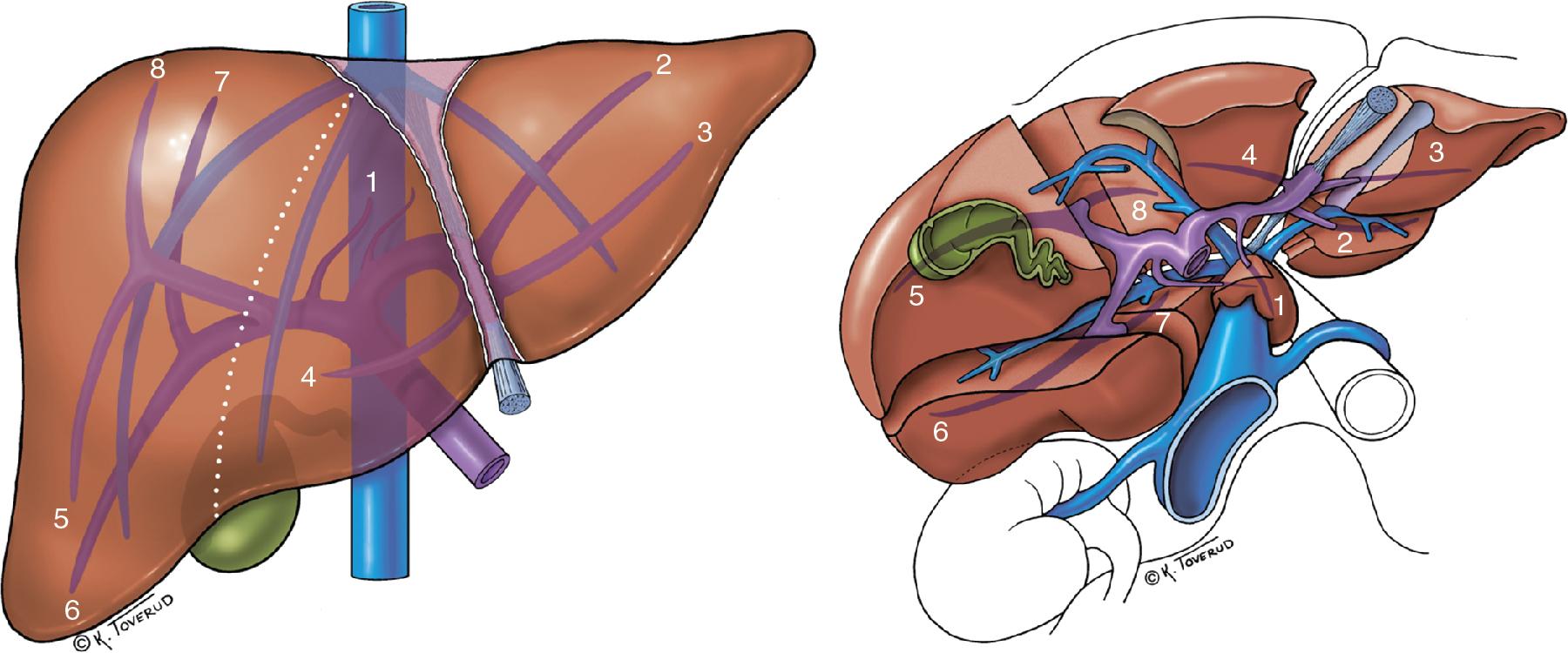
Historically, a hemihepatectomy was the operation of choice for most liver surgeons (see Chapters 101 and 118A ). To safely control inflow and outflow of the part to be resected ensured a safe division of the often-treacherous liver parenchyma, where large vessels not revealed by preoperative scans could hide. With the development of imaging and anesthesiology and surgical techniques, a range of possibilities opened up, and the surgeons could begin to tailor operations for each patient. Oncologic treatments have evolved that allow better biologic control of disease (see Chapters 65 , 91 , 92 , 96 , 97 , 98 , and 99 ), thus opening the door for re-resections in patients who already had parts of the liver removed. Thus parenchyma preservation has become increasingly important, and surgeons developed ways to perform parenchyma preserving resections (see Chapter 102 ). , Segmental hepatectomy, or parenchyma-sparing liver surgery, can be performed by removing either anatomic segments of the liver, or by removing parts of the liver not defined by Couinaud’s segments but by the tumor, which makes the operation necessary (see Chapters 102B and 118B ).
Most centers worldwide currently use parenchyma-sparing liver resection whenever possible (see Chapters 101 and 102 ). Its role and advantages over formal hepatectomies have been well studied. The idea is to remove the tumor in an oncologically adequate way, while preserving as much healthy liver parenchyma as possible. Parenchyma-sparing liver resections require in-depth knowledge of liver anatomy (see Chapter 2 ) and experience in intraoperative ultrasound (see Chapters 24 and 103 ). Patient-specific 3D models may be helpful.
Parenchyma-sparing liver surgery can be performed by two strategies: segment-oriented (anatomic) or tumor-oriented (non-anatomic or atypical resections). , In anatomic resections (see Chapters 102B and 118B ), the surgeon first dissects and divides the vessel supplying the relevant part of the liver from the hilum and then resects the devascularized area of the liver. In atypical resections (see Chapter 102A ), the tumor is resected with a necessary margin by approaching the tumor supplying vessel from the surface. In our practice, atypical resections are dominant. We find it faster and easier to approach the tumor supplying vessels from the surface rather than from the hilum of the liver, especially when removing tumors that affect several liver segments. Resecting the tumor from the surface is especially suited for colorectal liver metastases (see Chapter 90 ), while anatomic resections may be more suitable for hepatocellular carcinoma (HCC) (see Chapter 89 ) because of segmental spread of metastases. However, the atypical approach can be suitable also for smaller hepatocellular carcinomas and in cases where the future liver remnant is small.
After the first in the early 2000s, parenchyma sparing liver surgery has been described by several authors. A parenchyma-sparing strategy is associated with fewer postoperative complications, equivalent cancer-related outcomes, and a higher feasibility of future resections (see Chapter 102A ).
This chapter reviews the surgical technique of laparoscopic atypical segmental hepatectomy.
Standard preoperative radiologic work-up in our practice is computed tomography (CT) of chest and abdomen (see Chapters 13 , 14 , and 15 ). For colorectal liver metastases, it is sufficient with portal venous phase of high quality, while multiple phases are necessary to assess primary tumors. In addition, we always do magnetic resonance imaging (MRI) with a liver specific contrast agent because this sometimes finds small metastases not visible on CT. Close collaboration with the radiology department is essential to ensure high quality imaging, especially for liver MRI. Positron emission computed tomography (PET-CT) is in our practice mostly used to identify extrahepatic disease in situations where we are in doubt if the patient will benefit from surgery. Contrast enhanced ultrasound is occasionally used to clarify the diagnosis of a tumor (see Chapter 18 ).
Three-dimensional (3D) reconstructions are useful in pre- and intraoperative settings, and we believe that, in the future, it will be used routinely. These patient-specific 3D models can provide a better spatial understanding to create the optimal resection plan ( Fig. 127D.2 ).
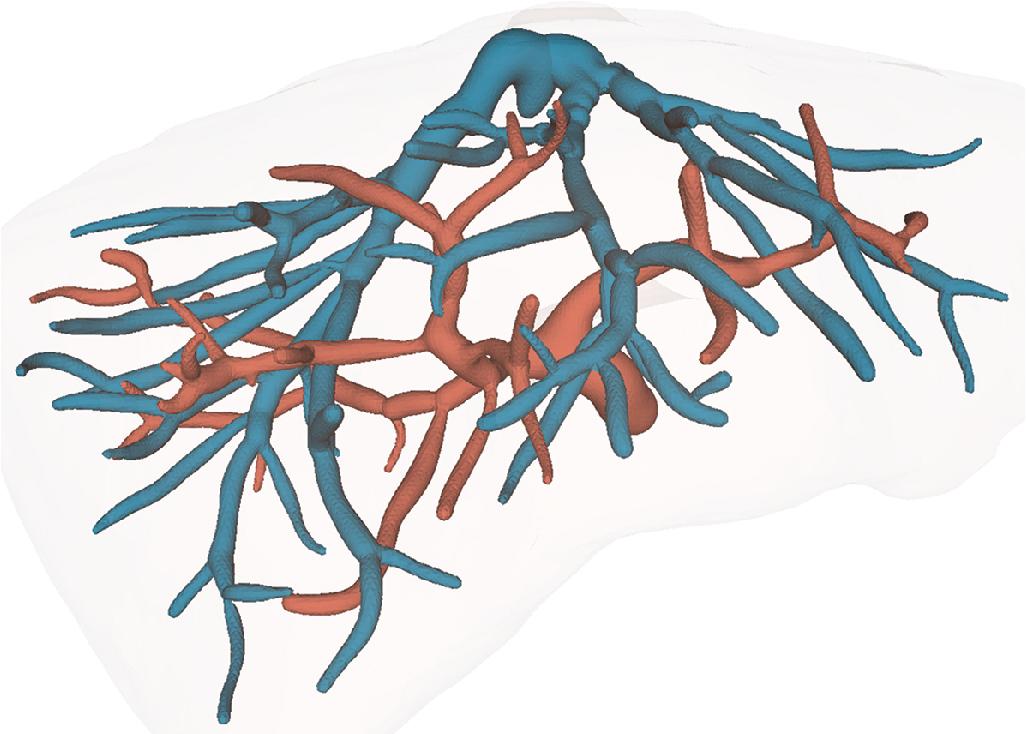
A wide range of laparoscopic equipment is available in the market. Most surgeons have different preferences; however, it is important that the surgical team has found the optimal list of instruments and the whole team is familiar with setup and functioning of equipment to avoid any disturbance during the operation. It is important that the center has a back-up of equipment if something needs to be replaced. A tray with instruments for open surgery must be available in the operating theater.
We prefer a 10 mm, 30-degree laparoscope because it enables parallel visualization from a port placed lateral to the working port (“camera on the shoulder”) without conflicting with the working instruments of the operating surgeon. It also makes it possible to look around corners, which is useful when visualizing a resection line or when dissecting a large vessel.
A flexible laparoscope could further improve visualization, especially in posterior segments.
A 3D laparoscope can be useful in specific settings, especially complex tasks like suturing, but it is not a necessity. High-quality 4K cameras and large screens may give similar or even greater advantages.
The use of intraoperative ultrasound with color doppler function is crucial in both open and laparoscopic surgery (also see Chapters 24 and 103 ). When learning laparoscopic liver surgery, performing laparoscopic ultrasound is mandatory. It helps clarify the liver anatomy, the tumor location, and the distance of the tumor from large vessels. Occasionally, it reveals new tumors. Moreover, it helps orientation and to control resection lines and margins. Ultrasound probe manipulation during a laparoscopic procedure is more difficult than in open surgery, especially when examining in the posterosuperior segments. Appropriate liver mobilization and moving the probe between different trocars facilitates this task.
Bipolar vessel sealing device. These devices are widely used in different surgical subspecialties including liver surgery. They facilitate performing parenchyma transection and hemostasis at the same time. The function of these devices is based on compression pressure and powerful radiofrequency energy causing contraction of collagen and elastin between opposing vessel walls. We prefer a straight jaw bipolar device (e.g., LigaSur dolphin tip) because its tip is very suitable for dissection
Ultrasonic sealer/dissection device. These devices are similar to bipolar sealers and provide simultaneous cutting and coagulation but are based on heat created by longitudinal vibration of the blades. The sealing of the vessels with thin wall (e.g., hepatic veins) is not so effective with this type of instruments because the vibrations might tear the fragile vessel wall apart.
Monopolar and bipolar cautery. This is usually used for marking resection lines on the liver surface and performing hemostasis, respectively. Bipolar forceps can also be used for clamp-crushing during the parenchyma transection. A bipolar forceps is a very versatile tool frequently used by many liver surgeons.
Ultrasonic Aspirator. Ultrasonic aspirators are very useful tools that can be used in addition to the clamp-crush technique to dissect intrahepatic vessels, when performing parenchyma transection.
Laparoscopic Suture. Suturing is one of the complex tasks in laparoscopic surgery. In laparoscopic liver surgery, we prefer to use barbed sutures with a pledget as an anchor, especially when suturing in the liver parenchyma. Other sutures are also useful, depending on the surgeon’s preference.
Endo-Clips. We use both metal and polymer clips (Hem-o-Lok). The metal clips are suitable for smaller vessels and bile ducts. They save space and can be used as a secondary security. Polymer clips are in comparison safer, as they lock tight on the vessel, and can therefore be used to ligate larger vessels.
Endo-staplers (mainly vascular). These devices allow division of large vessels. They come with an articulating cartridge and straight or curved tips, making it easier to slide beneath difficultly positioned vessels. In addition to vascular stapling, endo-staplers can be used as an alternative method of parenchyma transection. This technique makes transection faster; however, this type of parenchyma transection is blinded, and one always should ensure that the transection area is free of vessels and bile ducts that supply or drain the remnant liver.
Laparoscopic liver retractors. Single or multiple use retractors provide support and retraction of the liver, thus facilitating access to the resection area. To succeed with laparoscopic liver surgery, it is necessary to have a retractor that the whole operative team is familiar with.
Hepatoduodenal ligament clamping or Pringle maneuver (see Chapter 118 ) is used to temporarily reduce or stop the blood flow to the liver, thus decreasing the blood loss during the parenchyma transection. The anesthesiologist should be asked to notify surgeons every five minutes after clamping. We usually use 15 minutes clamping and 5 minutes reperfusion and try to avoid clamping more than 120 minutes in total.
Several methods of performing the Pringle maneuver have been described; however, we have adopted two analogous methods to preform the Pringle maneuver:
Internal. After exposure of the hepatoduodenal ligament and opening the pars flaccida of the gastro-hepatic ligament, the porta hepatis is surrounded by a vessel loop passed behind the hepatic pedicle through the foramen of Winslow and fixed with a Hem-o-Lok clip ( Fig. 127D.3 ). The vessel loop can be tightened when needed by pulling it up with a grasper. It simply surrounds and subsequently ties the hepatoduodenal pedicle to hang it and facilitate the Pringle maneuver, if necessary.
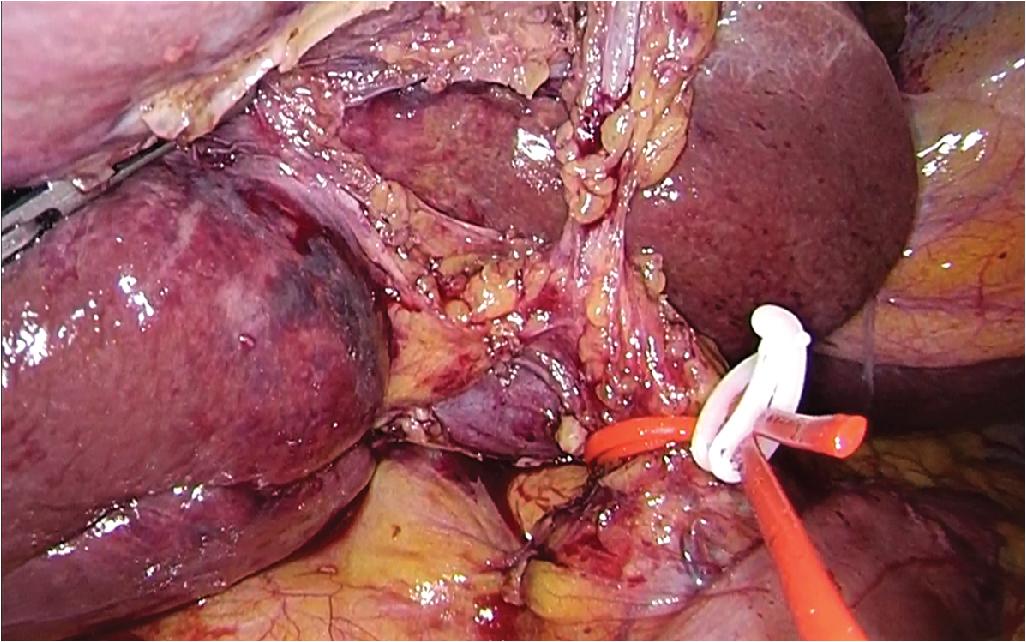
External. Instead of vessel loop, a cotton tape is passed through the foramen of Winslow, around the porta hepatis. The ends of the cotton tape are pulled with a grasper through a 5 mm port trocar placed laterally on the left side. Then, the 5 mm trocar is replaced by a 16-Ch suction catheter that is pushed inside the abdominal cavity up to the level of the hepatic pedicle, while the external end of the cotton tape and catheter remains outside of the patient so that the tourniquet can be tightened from outside ( Fig. 127D.4 ).
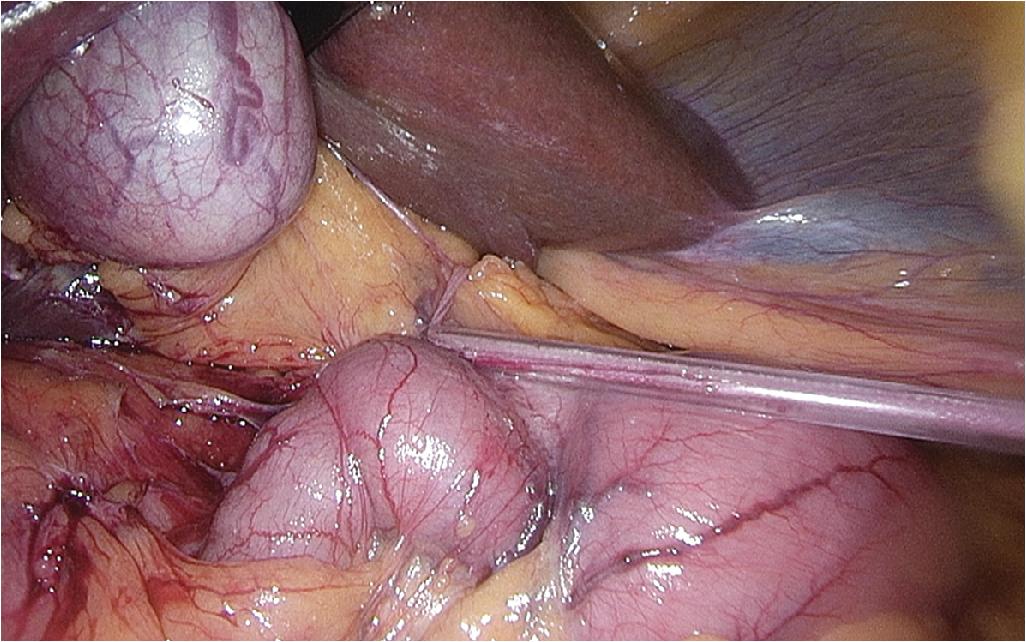
To simplify the understanding of our technique, we have performed an MRI of a cauliflower and segmented it. This exemplifies the surgical anatomy of the liver (see Chapter 2 ), and it demonstrates selective removal of segments and subsegments using the “from surface to the pedicle” technique ( Fig. 127D.5 ).
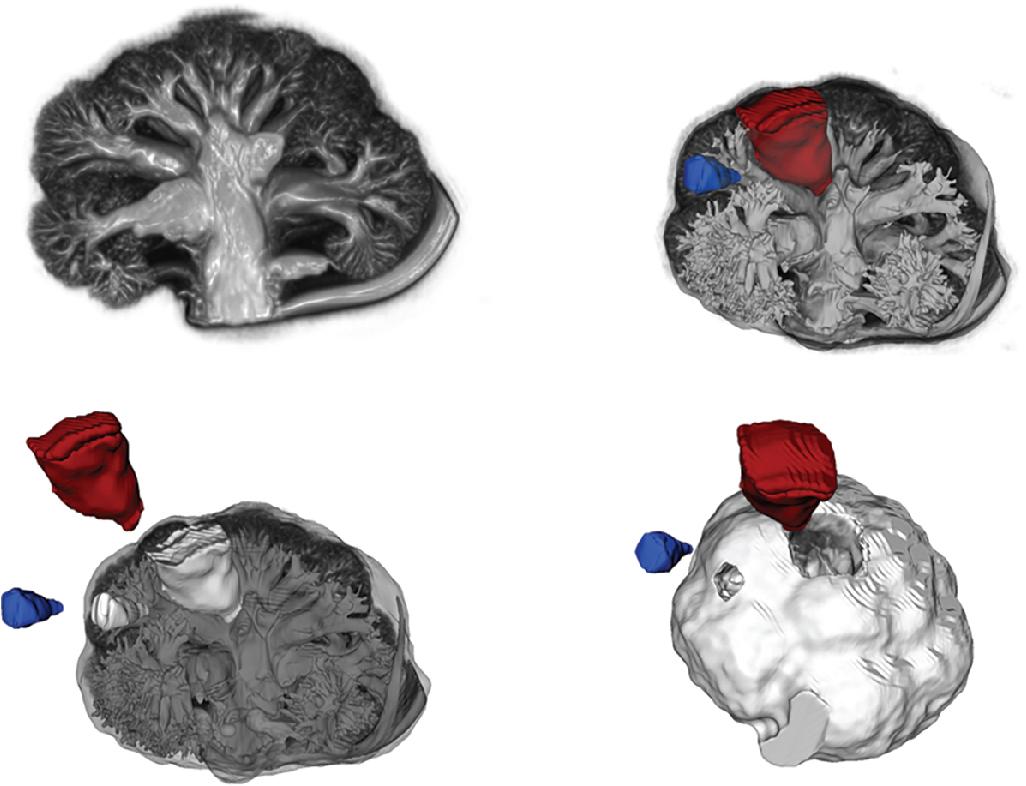
The patient is placed in the supine position (anterolateral segments) or in the 30- to 45-degrees with the right side up (posterosuperior segments), which helps achieve gravity-facilitated retraction. The surgeon usually stands on the patient’s right side, in some cases to the left side ( Fig. 127D.6 ). The French position (surgeon standing in between patient’s legs), is also an option, although not used by our group.
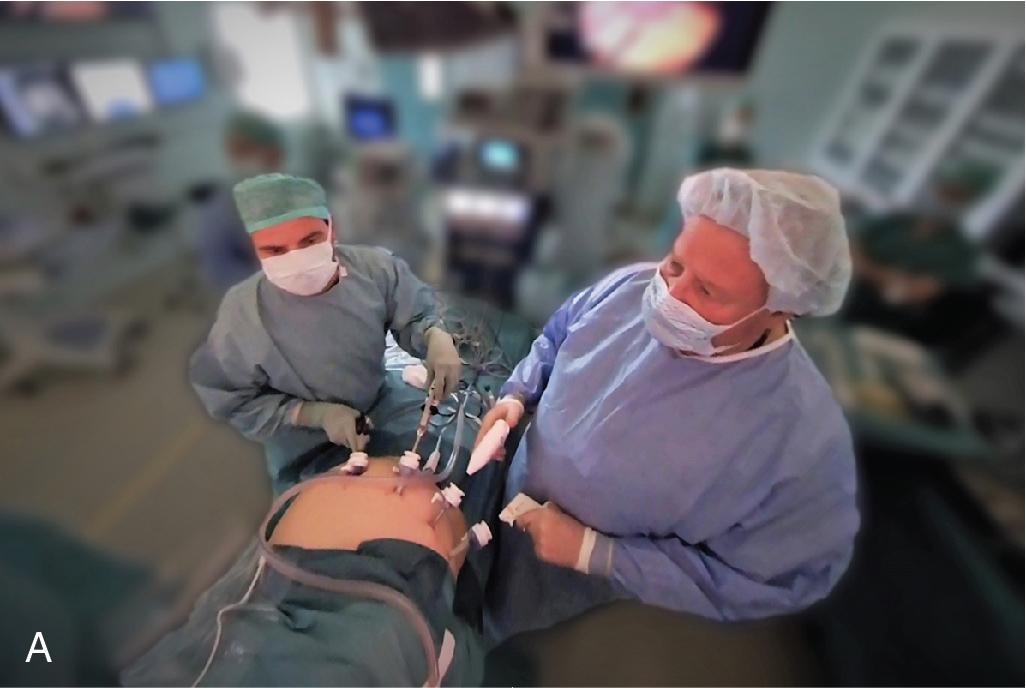
Become a Clinical Tree membership for Full access and enjoy Unlimited articles
If you are a member. Log in here